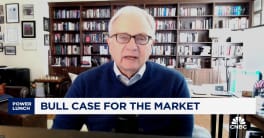Economists say the personal income and spending report from the U.S. Department of Commerce posted higher-than-anticipated results for June due to downward revisions to the prior two months. Rising inflation adds to the hawkish viewpoint at the Fed, though it remains universally expected that the Fed will hold rates on Tuesday.
Much of the report's data was released last week in the second-quarter GDP report. This report gives figures on monthly data for the past three months, which includes revisions to April and May data, but the quarterly results were already known beforehand.
The Fed's preferred measure of inflation, the personal consumption expenditures (PCE) core deflator, advanced by 0.3% (0.266%) in June, one-tenth higher than expectations and contributing to a year-over-year change of 2.3% (2.307%). That pace is three-tenths above the Fed's unofficial target level of 2.0%, marking the highest pace of inflation since March 2007.
James Knightley, strategist at ING Financial Markets, commented that the report will add weight to the hawkish viewpoint at the FOMC, even though the Fed isn't in a position to hike rates just yet.
"[T]he Fed is likely to continue signalling that it would ideally like to raise rates, however, given the uncertainty on growth we doubt that they will be hiking rates anytime soon. The most likely outcome of all this is that the Philadelphia Fed's Charles Plosser joins Dallas Fed President, Richard Fisher, in voting for a rate hike tomorrow," Knightley said.
Fixed income strategist TJ Marta from RBC Capital Markets added, "The year-over-year inflation rate has trended higher since bottoming at 1.9% in August '07 and is now near the cyclical highs for this data series since 1993."
The report also showed a 0.1% month-over-month increase in personal income in June, following a 1.8% gain in May and a 0.2% gain in April. The annual gain is 5.7%.
Meanwhile, total personal spending, which comprises roughly 70% of U.S. gross domestic product, rose 0.6%, a slower gain than the previous month's 0.8% gain yet faster than expected as April's gain was revised down to 0.3%.
Marta said the income spending data "continue to be distorted" by the fiscal stimulus rebate cheques.
"[T]he ending of the tax rebates, rising job losses, ongoing house price declines, and continued impairment of financial intermediation suggest a weakening consumer in coming months," he said. "The inflation data is clearly worrisome, and the historical tendency for inflation to rise during the early months of a growth slowdown make it no less so."
Compensation rose 0.2% after a 0.3% advance in May and a 0.1% gain in April, while wages and salaries increased 0.2%, a slower pace than the 0.3% gain in May but quicker than the 0.1% gain in April. Disposable income fell 1.9% following a 5.7% gain in May and a 0.3% advance in April.
The report also recorded a 2.5% increase in the savings rate, much slower than the previous month's 4.9% gain.
The PCE deflator rose 0.8% in the month, contributing to a 4.1% annual gain.
Looking ahead, HFE chief U.S. economist Ian Shepherdson said that consumption in the third quarter is expected to be "very weak" and could possibly reach a 17-year low.
By Patrick McGee and edited by Nancy Girgis







